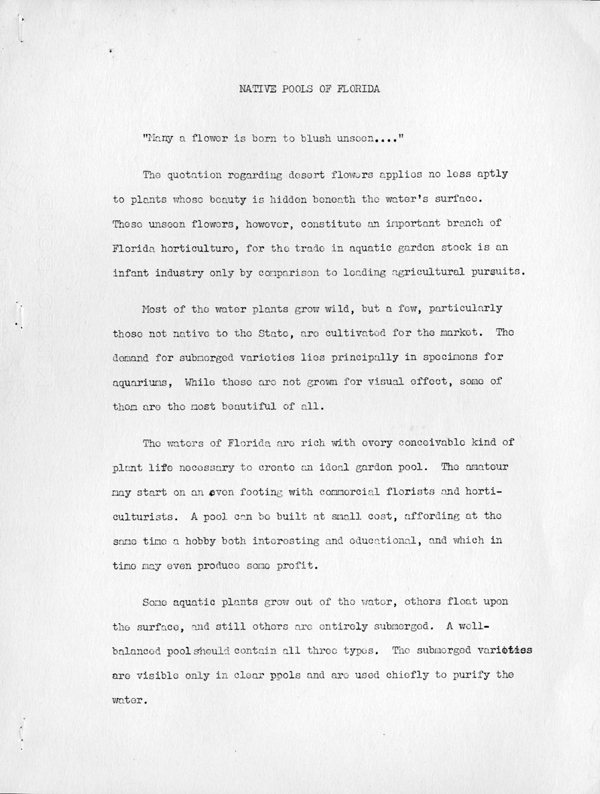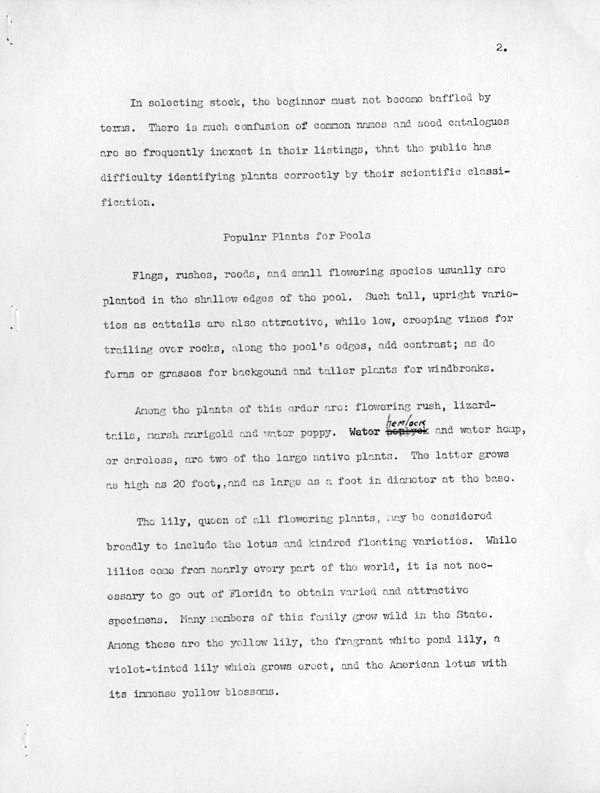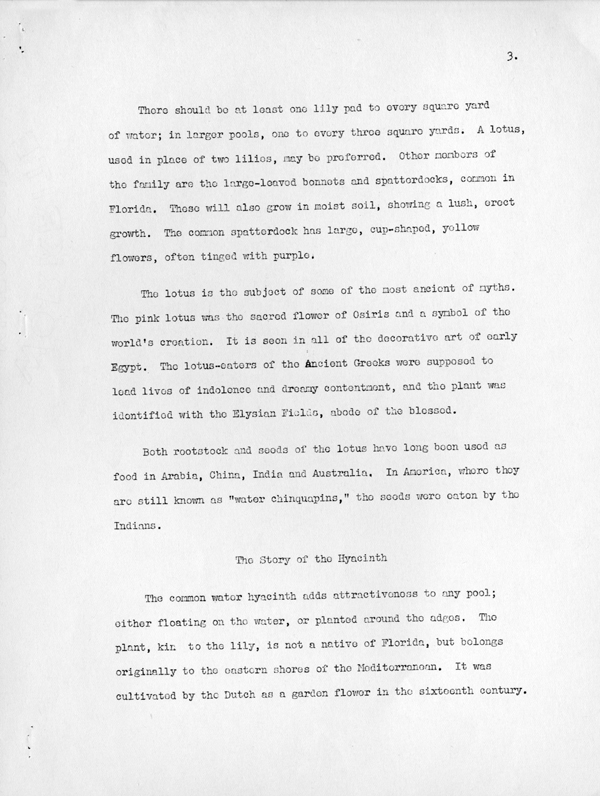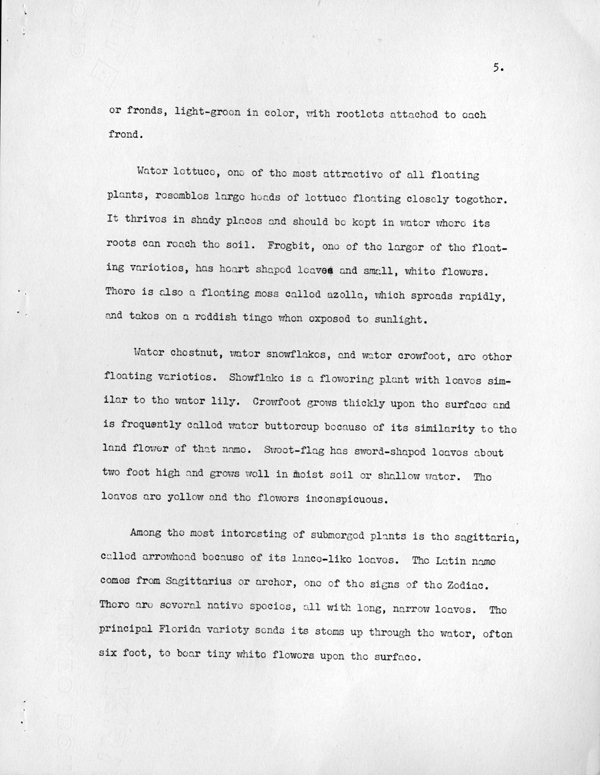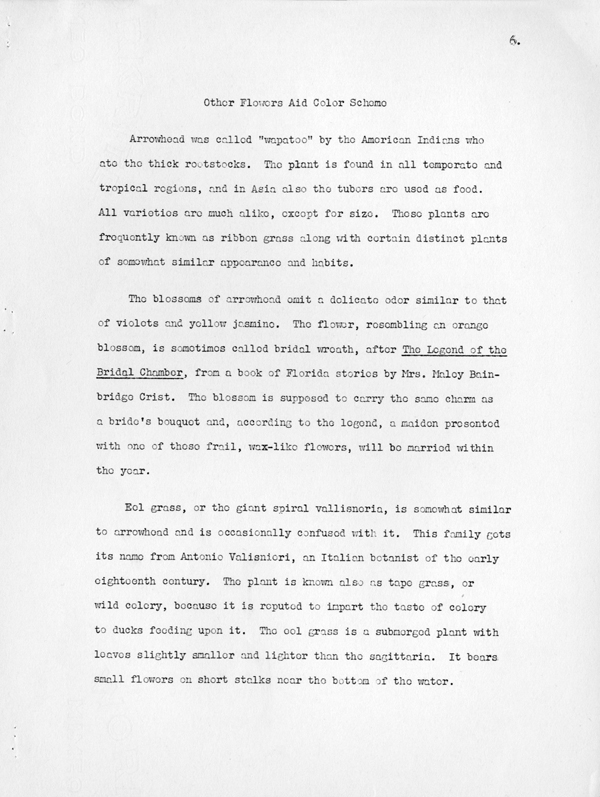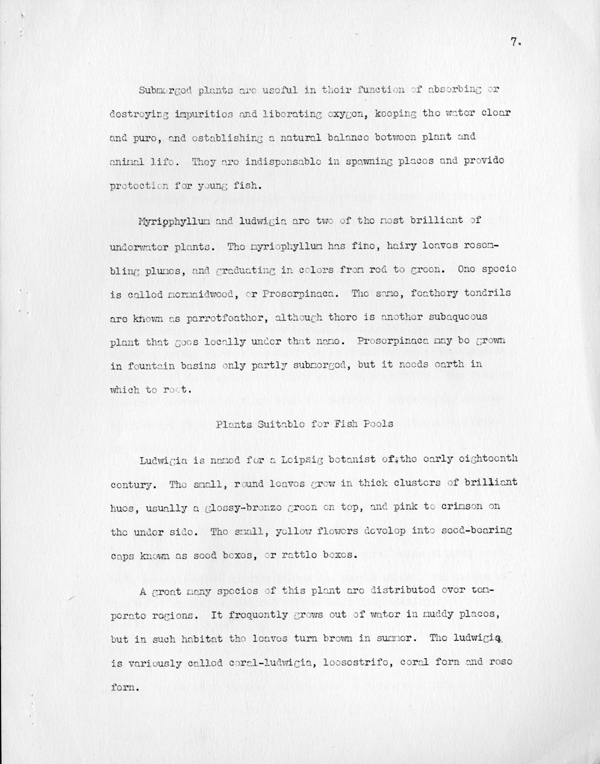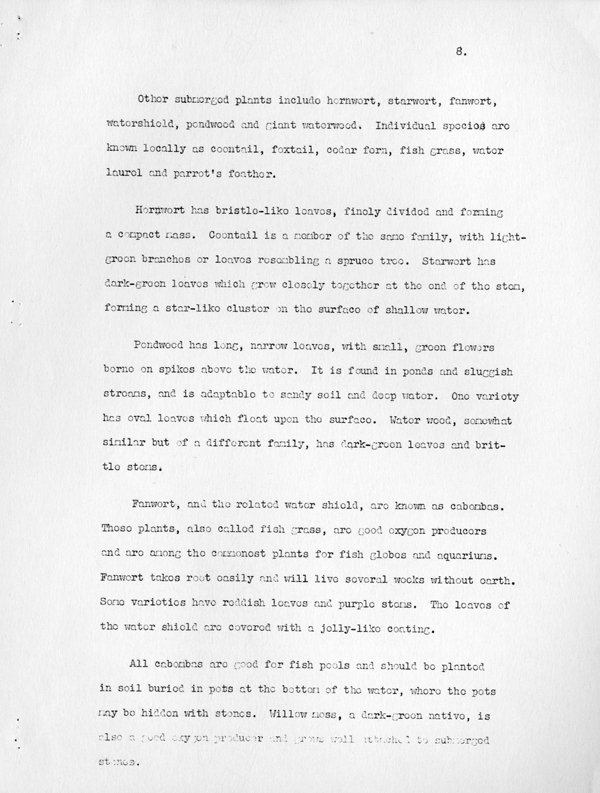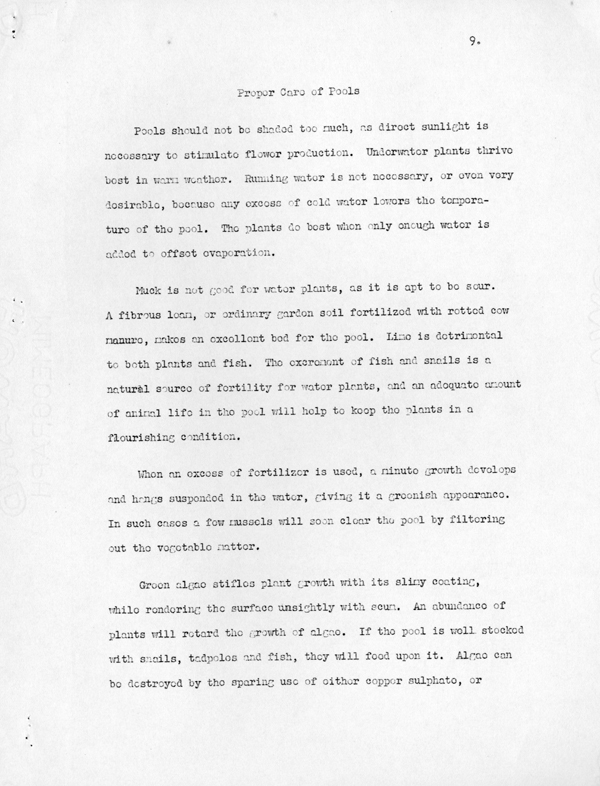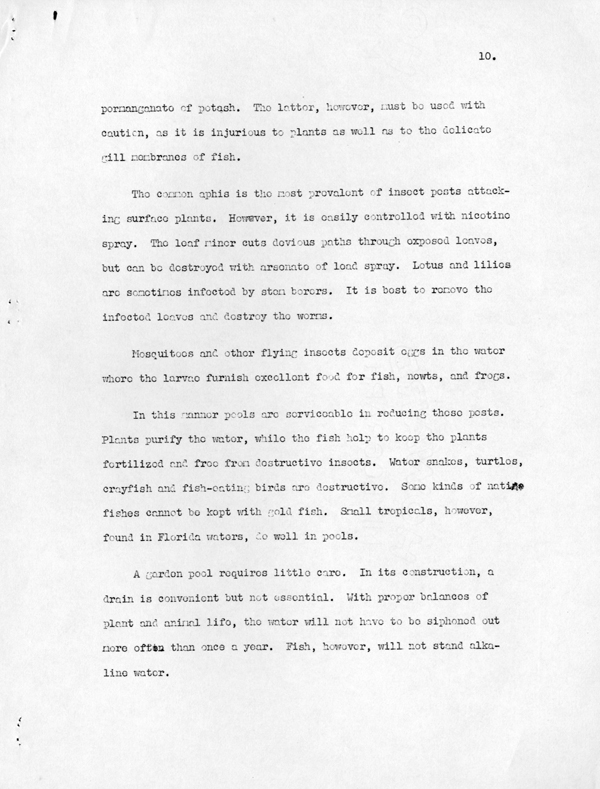Florida Memory is administered by the Florida Department of State, Division of Library and Information Services, Bureau of Archives and Records Management. The digitized records on Florida Memory come from the collections of the State Archives of Florida and the special collections of the State Library of Florida.

State Archives of Florida
- ArchivesFlorida.com
- State Archives Online Catalog
- ArchivesFlorida.com
- ArchivesFlorida.com
State Library of Florida
Related Sites
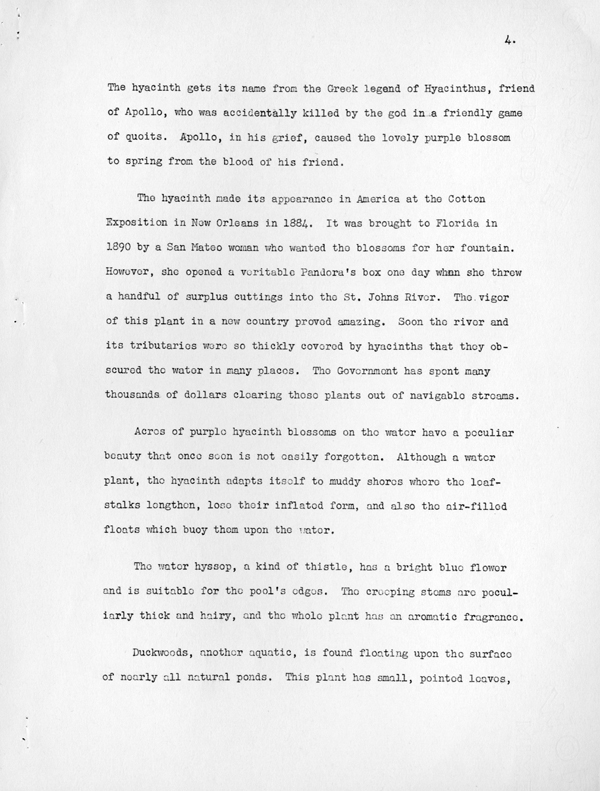
Description of previous item
Description of next item

Title
Published Date
[page 4]
The hyacinth gets its name from the Greek legend of Hyacinthus, friend of
Apollo, who was accidentally killed by the god in a friendly game of
quoits. Apollo, in his grief, caused the lovely purple blossom to spring from
the blood of his friend.
The hyacinth made its appearance in America at the Cotton Exposition
in New Orleans in 1884. It was brought to Florida in 1890 by a San Mateo
woman who wanted the blossoms for her fountain. However, she opened a
veritable Pandora's box one day when she threw a handful of surplus cuttings
into the St. Johns River. The vigor of this plant in a new country proved
amazing. Soon the river and its tributaries were so thickly covered by hyacinths
that they obscured the water in many places. The Government has spent many
thousands of dollars clearing these plants out of navigable streams.
Acres of purple hyacinth blossoms on the water have a peculiar beauty that
once seen is not easily forgotten. Although a water plant, the hyacinth adapts
itself to muddy shores where the leaf-stalks lengthen, lose their inflated form, and
also the air-filled floats which buoy them upon the water.
The water hyssop, a kind of thistle, has a bright blue flower and is
suitable for the pool's edges. The creeping stems are peculiarly thick and hairy,
and the whole plant has an aromatic fragrance.
Duckwoods, another aquatic, is found floating upon the surface of
nearly all natural ponds. This plant has small, pointed leaves,
Title
Subject
Description
Source
Date
Contributor
Format
Language
Type
Identifier
Published Date
Image URL
Thumbnail
Transcript Path
Image Path
Image Path - Large
Chicago Manual of Style
Native Pools of Florida. 1940. State Archives of Florida, Florida Memory. <https://www.floridamemory.com/items/show/181528>, accessed 15 December 2025.
MLA
Native Pools of Florida. 1940. State Archives of Florida, Florida Memory. Accessed 15 Dec. 2025.<https://www.floridamemory.com/items/show/181528>
AP Style Photo Citation

 Listen: The World Program
Listen: The World Program

